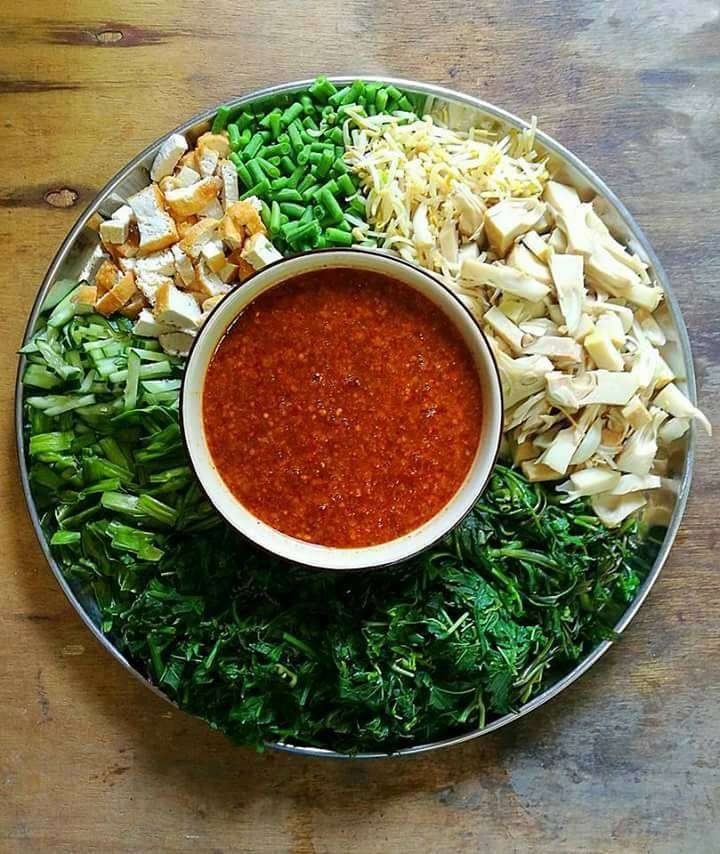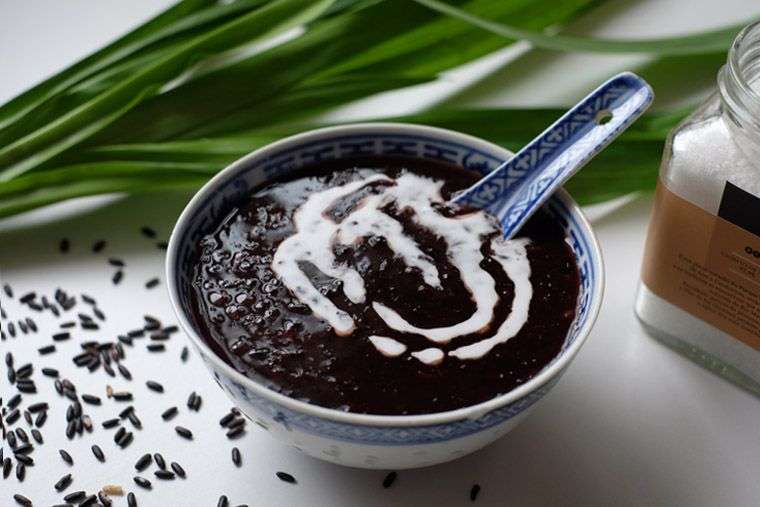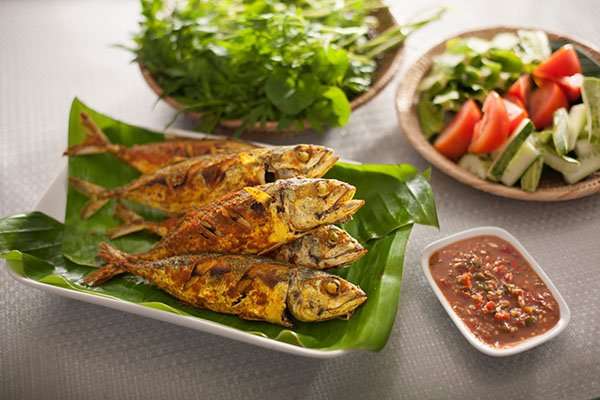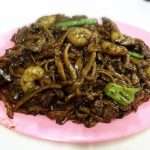Typically sold in Javanese restaurants or warungs, Pecal is a traditional salad that is known for its simplicity of preparation as well as its low price. The flavour of this salad is not to be ignored either, as it boasts a mix of ingredients, which combined, forms a delectable dish. A perfect plate of Pecal would comprise of mixed vegetables drenched in peanut sauce, and a side of steamed rice or lontong if you’re looking for a more filling meal.
For those of you who are familiar with another popular salad dish—Gado-Gado, you may be wondering what’s the difference between them. The answer lies in the sauce, wherein the case of Pecal, their peanut sauce has a more delicate aftertaste as it does not contains coconut milk.
Origin of Pecal
Having a strong association with Javanese cuisines, it comes as no surprise that Pecal’s origin rooted in Indonesia. In Indonesia, this dish is often sold by travelling vendors called “Mbok bakul Pecal”. These travelling Pecal-selling women usually frequent residential areas, marketplaces, and train stations, where you can quickly identify them by the woven bamboo basket carrying Pecal ingredients that they carry.
Traditionally, this salad dish has been popular among locals as a convenient dish to bring along while travelling—the dish representing practicality, simplicity, and travel. From there, Pecal has come a long way, even making its way to Malaysia where Javanese immigrants had first introduced it.
Have we intrigued you to have a taste of this dish? Now let us introduce you to a simple Pecal recipe!
Pecal Recipe
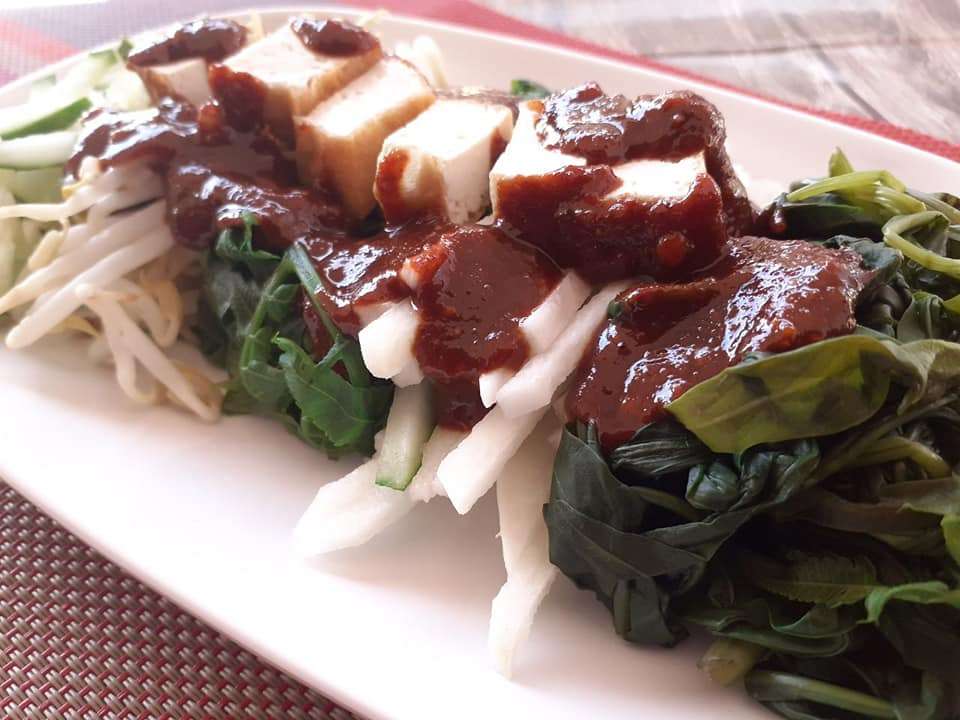
Being a versatile dish, the vegetables used in this salad often differs from vendor to vendor, each having their own recipe. Even then, the ingredients used have a common theme, which is that none of the vegetables used has a high carbohydrate content. So you will probably never see potatoes in this dish.
Difficulty: Easy
Details
4-6 servings
60 minutes
30 minutes
200 kcal
Ingredients
8 kaffir lime leaves (thinly sliced)
2 inches of kaempferia galangal (peeled)
1 teaspoon toasted shrimp paste
75 grams of palm sugar (shaved)
½ tablespoon of salt
2 tablespoons of tamarind juice (made with combining
1 teaspoon of tamarind and 2 tablespoons of water)Hot water (enough to thin the sauce)
boiled cabbage
boiled spinach
boiled snake beans
boiled bean sprouts
boiled morning glory/water spinach
boiled cassava leaves
raw cucumber
raw basil leaves
Directions
- In a food processor or mortar and pestle, grind together peanuts, cayenne peppers, garlic, kaffir lime leaves, kaempferia galangal, toasted shrimp paste, palm sugar, and salt. Grind together until a thick brown mixture is produced (note: the mixture should have a sticky consistency, sticky enough to gather into a ball or shape into a block).
- Next, pour in tamarind juice and just enough water to turn the mixture into a more runny sauce. Adjust the amount of water to include based on how runny you like your sauce to be. The average amount of hot water would be about 400ml.
- Finally, assemble the dish by arranging the vegetables on the plate, and pour peanut sauce over it. Stir everything together, and your Pecal is ready to serve!
Ways to Enjoy Pecal
This salad is best served neither too cold nor too hot—perfect in room temperature. After you have mastered this basic recipe, you could go on with exploring other ingredients you could include in this dish and create your original concoction. You could also add vegetables with a vibrant colour to make your plate aesthetically pleasing as well. Pecal has so much potential, so what are you waiting for? Start cooking!
Explore other popular Malaysian delights with Lokataste Recipe and more!

